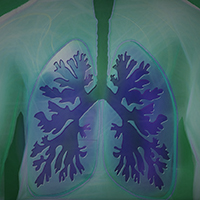Continuous positive airway pressure therapy in the management of hypercapnic cardiogenic pulmonary edema

All claims expressed in this article are solely those of the authors and do not necessarily represent those of their affiliated organizations, or those of the publisher, the editors and the reviewers. Any product that may be evaluated in this article or claim that may be made by its manufacturer is not guaranteed or endorsed by the publisher.
Authors
Continuous positive airway pressure (CPAP) therapy or non-invasive ventilation (NIV) represent the first line therapy for acute cardiogenic pulmonary edema (CPE) together with medical therapy. CPAP benefits in acute CPE with normo-hypocapnia are known, but it is not clear whether the use of CPAP is safe in the hypercapnic patients. The aim of this study is to evaluate CPAP efficacy in the treatment of hypercapnic CPE. We enrolled 9 patients admitted to the emergency room with diagnosis of acute CPE based on history, clinical examination, arterial blood gas analysis (ABG) and lung-heart ultrasound examination. We selected patients with hypercapnia (pCO2 >50 mmHg) and bicarbonate levels <30 mEq/L. All patients received medical therapy with furosemide and nitrates and helmet CPAP therapy. All patients received a second and a third ABG, respectively at 30 and 60 min. Primary end-points of the study were respiratory distress resolution, pCO2 reduction, pH improvement, lactates normalization and the no need for non-invasive ventilation or endo-tracheal intubation. All patients showed resolution of respiratory distress with CPAP weaning and shift to Venturi mask with no need for NIV or endo-tracheal intubation. Serial ABG tests showed clear reduction in CO2 levels with improvement of pH and progressive lactate reduction. CPAP therapy can be effective in the treatment of hypercapnic CPE as long as the patients have no signs of chronic hypercapnia on ABG and as long as the diagnosis of heart failure is supported by bedside lung-heart ultrasound examination.
How to Cite

This work is licensed under a Creative Commons Attribution-NonCommercial 4.0 International License.






